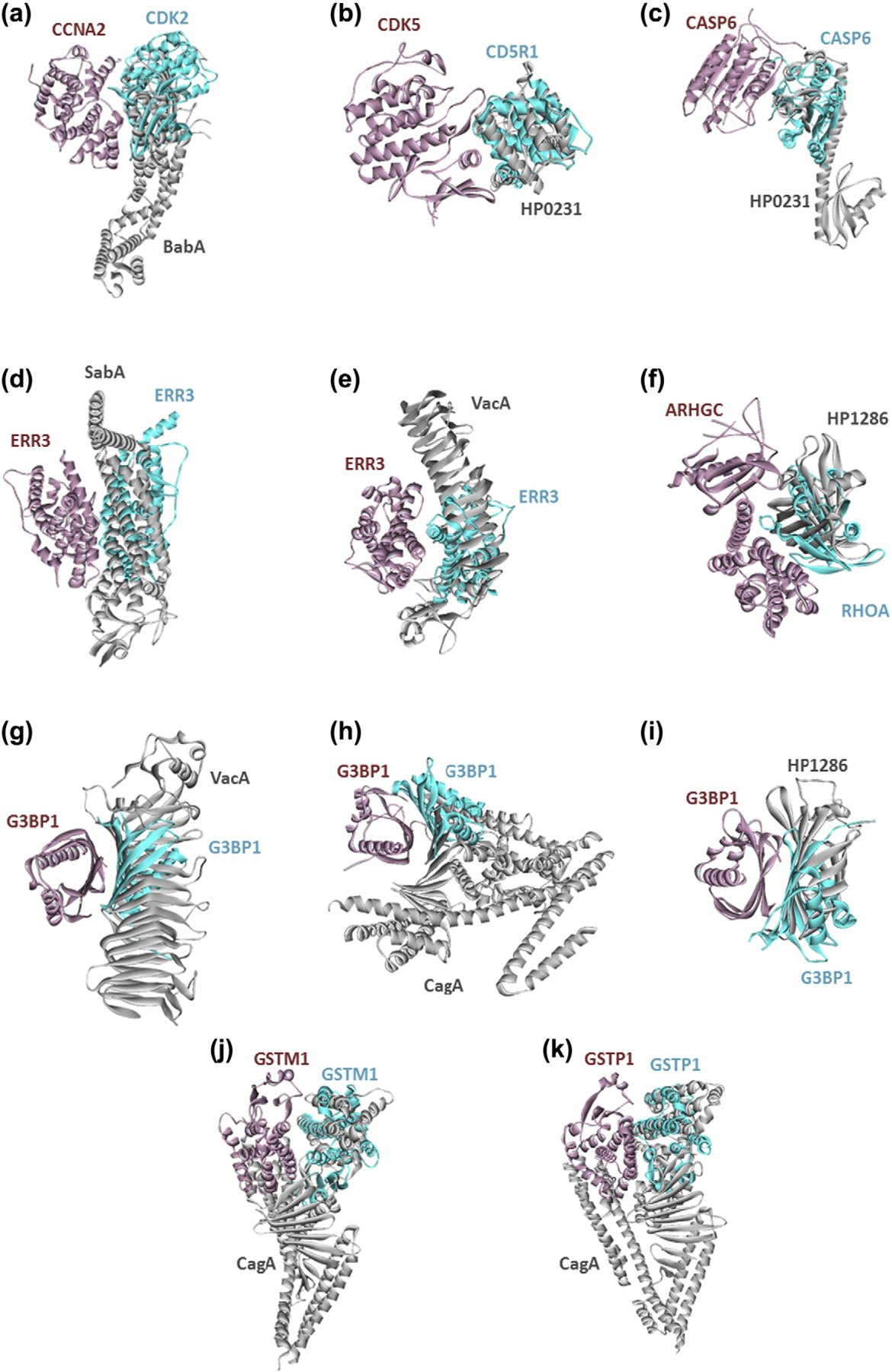Fig. 3.

H. pylori proteins targeting the cell-cycle regulators (a and b), apoptosis regulators (c), estrogen receptors (d and e), Ras and Rho GTPase family members (f, g, h, and i), and glutathione metabolism (j and k). Figures show the superimposed structures of endogenous human PPIs and modeled HPIs. Pink and cyan proteins are human and gray ones are H. pylori proteins. Gray proteins bind to pink proteins by hijacking the interface on cyan proteins (only the interface is similar, not the global structure). Thus, they may block the pink–cyan protein interactions.
